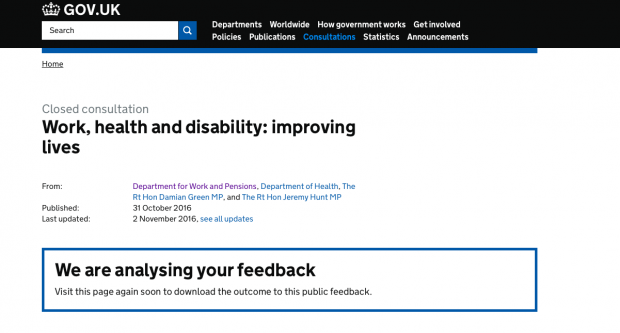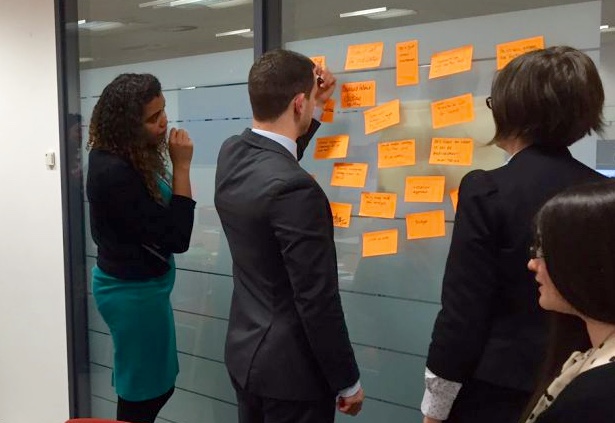
I’m James Rogers, a policy professional in the Work and Health Unit, which is jointly sponsored by the Department for Work and Pensions and Department of Health.
We work across government to improve employment and health outcomes for people who have or may acquire a disability or health condition.
I joined the Work and Health Unit to coordinate development of a Green Paper publication on Work, Health and Disability, which was published in October 2016. A Green Paper is a document published by government to consult on policy proposals.
Why did we use agile?
Developing this product was a significant piece of fast-paced work that covered a number of sizeable policy areas, including health, welfare and employers. It also involved bringing together a large virtual team of colleagues in different areas, such as policy, analysis, and communications.
To make a success of this, we wanted to build a high-performing team that shared a set of values and a way of working that felt ‘new’. We decided to look to agile principles being used elsewhere in DWP’s digital community and bring these into a strategy and policy environment.
I played the coordinating role – the delivery manager, or ‘scrum master’, in agile terms – and took on responsibility for introducing this new way of working, supported by the GDS Academy.

What was different about working this way?
Agile was the catalyst for developing a team culture that involved:
- more collaboration - by bridging traditional disciplines and team structures
- more communication - through short, sharp sessions to share updates, check-in on any issues and respond to change
- less hierarchy - by working in a flatter structure where teams self-organised their work around shared overall goals
We used techniques that were new to us, such as retrospectives, sprint plans and journey mapping that helped underpin this culture and progress work effectively.

It’s easy for policy makers to be put off by the unfamiliar terms, but this was mainly evolution rather than revolution. Many of the things we did were common sense approaches that smart and efficient teams should do and could easily adopt. For example, a retrospective is just taking time to reflect on what’s happened over previous weeks, celebrate achievements and consider how to work more effectively for the next phase. Sprint plans were short work plans that helped us bank progress, prioritise and allow everyone to see the wider picture and links across teams, rather than leaving this to the project manager.
What worked?
In true agile style, we ran a ‘super retrospective’ after publication to reflect on how this way of working had felt for the team. On the whole, the feedback was really positive. People enjoyed working in a self-organising team with a diverse skill set, felt empowered by the less hierarchical approach, and that the improved communication and collaboration helped adapt quickly and collectively to changing circumstances while maintaining focus on a clear goal. All of this helped build an engaged and high-performing team that successfully delivered a major strategy project.
What were the challenges?
There were also some challenges and things that worked less well. Not all agile principles translate into a strategy and policy environment that works to fixed parliamentary deadlines and government processes. Success was reliant on being flexible and not overly purist – take what works. Some new approaches took some getting used to, for example, teams ‘self-organising’ how they did work, rather than looking to the meeting chair or project manager, but this quickly became a virtue. Finally, linking these new ways of planning, prioritising and decision-making with traditional governance structures wasn’t always seamless.
What's next?
Overall, there is certainly a case to use more of these techniques in a policy and strategy world to build high-performing teams, and I’ve been talking to many others around government who are trying similar things. There’s also great potential to bring more user-centred design into policy making as we look to new, more open ways of policy making. For example, DWP's Policy Exploration team blogged recently about the work they are doing to bring more user-centred design approaches into the policy-making process.

2 comments
Comment by Bev Smith posted on
Thanks for sharing James, really interesting
Comment by Serena Bradshaw posted on
Very interesting--just the approach we're looking for in our burgeoning organisation!